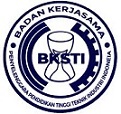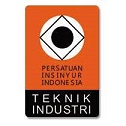Enhancing Efficiency in Industrial Metal Roof Replacement: Utilizing Goal Programming for Cost Optimization
Abstract
This study explores the use of Goal Programming (GP) to optimise project management decisions in the construction industry, focusing on a case study of a roof replacement project. The construction industry is crucial to a country's development, contributing significantly to economic growth and employment rates. However, construction projects are often complex and resource-intensive. Project management is essential in ensuring the successful completion of construction projects. The study uses GP to address the time-cost trade-off in project management, aiming to minimise project costs while meeting project deadlines and quality requirements. The GP model considers various constraints, such as the availability of workers and equipment, project duration, and budget limitations. The study presents two optimisation options: a time-focused option and a cost-focused ed option. The time-focused option prioritises timely project completion, while the cost-focused option aims to minimise project costs. In the case study, the time-focused option is the most suitable choice. This approach allows the project to be completed in time as the alternative option delay delays the project far too unacceptable. Overall, the study demonstrates the effectiveness of GP in optimising project management decisions in the construction industry. By carefully evaluating project constraints and objectives, GP can help construction companies achieve the best possible outcomes in terms of cost, time, and quality.
Keywords: Goal Programming, Construction Industry, Project Management, Time-Cost Trade-off, Optimization
Full Text:
PDFReferences
A. Mojumder and A. Singh, “An exploratory study of the adaptation of green supply chain management in construction industry: The case of Indian Construction Companies,” J Clean Prod, vol. 295, May 2021, doi: 10.1016/j.jclepro.2021.126400.
B. Nikmehr, M. R. Hosseini, I. Martek, E. K. Zavadskas, and J. Antucheviciene, “Digitalization as a strategic means of achieving sustainable efficiencies in construction management: A critical review,” Sustainability (Switzerland), vol. 13, no. 9, May 2021, doi: 10.3390/su13095040.
R. A. Khan, M. S. Liew, and Z. Bin Ghazali, “Malaysian Construction Sector and Malaysia Vision 2020: Developed Nation Status,” Procedia Soc Behav Sci, vol. 109, pp. 507–513, Jan. 2014, doi: 10.1016/j.sbspro.2013.12.498.
M. A. Mohd Fateh, M. R. Mohamed, and S. A. Omar, “The Involvement of Local Skilled Labour in Malaysia’s Construction Industry,” Front Built Environ, vol. 8, Mar. 2022, doi: 10.3389/fbuil.2022.861018.
G. K. Kulkarni, “Construction industr Construction industry: More needs to be done,” Indian J Occup Environ Med, vol. 11, no. 1, pp. 1–2, Apr. 2007.
H. P. Tserng, H.-H. Liao, L. K. Tsai, and P.-C. Chen, “Predicting Construction Contractor Default with Option-Based Credit Models—Models’ Performance and Comparison with Financial Ratio Models,” J Constr Eng Manag, vol. 137, no. 6, pp. 412–420, Jun. 2011, doi: 10.1061/(asce)co.1943-7862.0000311.
J. P. Lewis, “Project Planning, Scheduling & Control,” In The Ultimate Hands-On Guide To Bringing Projects In On Time And On Budget, 5th ed., North Carolina: McGraw Hill, 2011.
S. T. Suherman, “Optimasi Waktu dan Biaya Menggunakan Metode Time Cost Trade Off pada Proyek Access Road Construction and Soil Clean Up,” Jurnal Teknik Industri: Jurnal Hasil Penelitian dan Karya Ilmiah dalam Bidang Teknik Industri, vol. 3, no. 2, pp. 135–147, 2016.
A. A. Purba, A. Sunani, and I. P. D. A. S. Prabowo, “Analisis Penggantian Mesin Hot Press dengan Menggunakan Metode Equivalent Uniform Annual Cost (EUAC) di PT Xyz,” Jurnal Teknik Industri: Jurnal Hasil Penelitian dan Karya Ilmiah dalam Bidang Teknik Industri, vol. 8, no. 2, pp. 132–139, 2022.
G. N. Muhamad, R. Fadilah, and M. Fauzi, “Optimalisasi Biaya Distribusi Beras Subsidi Dengan Model Transshipment Optimizing the Cost of Distribution of Subsidized Rice Using the Transshipment Model,” Jurnal Teknik Industri, vol. 6, no. 1, 2020.
S. H. Razavi Hajiagha, H. Akrami, S. S. Hashemi, and H. A. Mahdiraji, “An Integer Grey Goal Programming for Project Time, Cost and Quality Trade-Off,” Engineering Economics, vol. 26, no. 1, Feb. 2015, doi: 10.5755/j01.ee.26.1.9930.
C. S. Snyder, A PROJECT MANAGER’S BOOK OF FORMS: A Companion to the PMBOK Guide, 6th ed. New Jersey: Wiley, 2013. [Online]. Available: www.Bookarchive.org
J. Zeng, M. An, and N. J. Smith, “Application of a fuzzy based decision making methodology to construction project risk assessment,” International Journal of Project Management, vol. 25, no. 6, pp. 589–600, Oct. 2007, doi: 10.1016/j.ijproman.2007.02.006.
H. Guo, Y. Zhou, Z. Pan, Z. Zhang, Y. Yu, and Y. Li, “Automated Selection and Localization of Mobile Cranes in Construction Planning,” Buildings, vol. 12, no. 5, May 2022, doi: 10.3390/buildings12050580.
A. Alarjani and T. Alam, “Lexicographic Goal Programming Model for Bank’s Performance Management,” J Appl Math, vol. 2021, 2021, doi: 10.1155/2021/8011578.
L. W. Hoe, L. W. Siew, and L. P. Fun, “Optimizing the financial management of electronic companies using goal programming model,” in Journal of Physics: Conference Series, IOP Publishing Ltd, Nov. 2021. doi: 10.1088/1742-6596/2070/1/012046.
V. Devani, M. I. H. Umam, Y. Aiza, and S. Sarbaini, “Optimization of Tire Production Planning Using The Goal Programming Method and Sensitivity Analysis,” (IJCSAM) International Journal of Computing Science and Applied Mathematics, vol. 8, no. 2, pp. 36–40, 2022.
B. V Chowdary and J. Slomp, Production planning under dynamic product environment: a multi-objective goal programming approach. University of Groningen, 2002.
R. E. Yulianti, “Optimalisasi Produktivitas Tanaman Padi dengan Preemptive Weighted Goal Programming,” 2016.
H. Zhao and G. He, “Research on Target Cost Control of Construction Project based on Goal Programming,” in the 16th International Conference on Industrial Engineering and Engineering Management, IEEE, 2009.
N. N. Vibhakar, K. K. Tripathi, S. Johari, and K. N. Jha, “Identification of significant financial performance indicators for the Indian construction companies,” International Journal of Construction Management, vol. 23, no. 1, pp. 13–23, 2023, doi: 10.1080/15623599.2020.1844856.
H. Iranmanesh and M. Rahimi, “Multi Objective Particle Swarm Optimization for a Discrete Time, Cost and Quality Trade-off Problem,” World Appl Sci J, vol. 4, no. 2, pp. 270–276, 2008.
L. Syahr, M. Khoswara, and S. Suseno, “Pencarian Rute Optimal Distribusi Melalui Pendekatan Metode Ant Colony Optimization (ACO):(Studi Kasus: Bakpia Pathok 25),” Jurnal Teknologi dan Manajemen Industri Terapan, vol. 2, no. 2, pp. 63–71, 2023.
W. Hu and X. He, “An innovative time-Cost-Quality tradeoff modeling of building construction project based on resource allocation,” The Scientific World Journal, vol. 2014, 2014, doi: 10.1155/2014/673248.
J. Y. Kim, C. W. Kang, and I. K. Hwang, “A practical approach to project scheduling: Considering the potential quality loss cost in the time-cost tradeoff problem,” International Journal of Project Management, vol. 30, no. 2, pp. 264–272, Feb. 2012, doi: 10.1016/j.ijproman.2011.05.004.
M. F. Koenen, M. Balvert, and H. Fleuren, “Bi-objective goal programming for balancing costs vs. nutritional adequacy,” Front Nutr, vol. 9, Dec. 2022, doi: 10.3389/fnut.2022.1056205.
DOI: http://dx.doi.org/10.24014/jti.v10i1.29476
Refbacks
- There are currently no refbacks.
Copyright (c) 2024 Wilson Sutanto, Stefanus Hanifa Prajitna, Christian Harito

This work is licensed under a Creative Commons Attribution-NonCommercial-ShareAlike 4.0 International License.
Jurnal Teknik Industri
P-ISSN 2460-898X | E-ISSN 2714-6235
Published by:
Industrial Engineering Department
Universitas Islam Negeri Sultan Syarif Kasim Riau, Indonesia
Office Address:
H.R. Soebrantas KM 15.5, Tampan, Pekanbaru, Riau, Indonesia 28293
email: jti.fst@uin-suska.ac.id
Indexed by:
JTI : Jurnal Teknik Industri under a Creative Commons Attribution-NonCommercial-ShareAlike 4.0 International License.

















